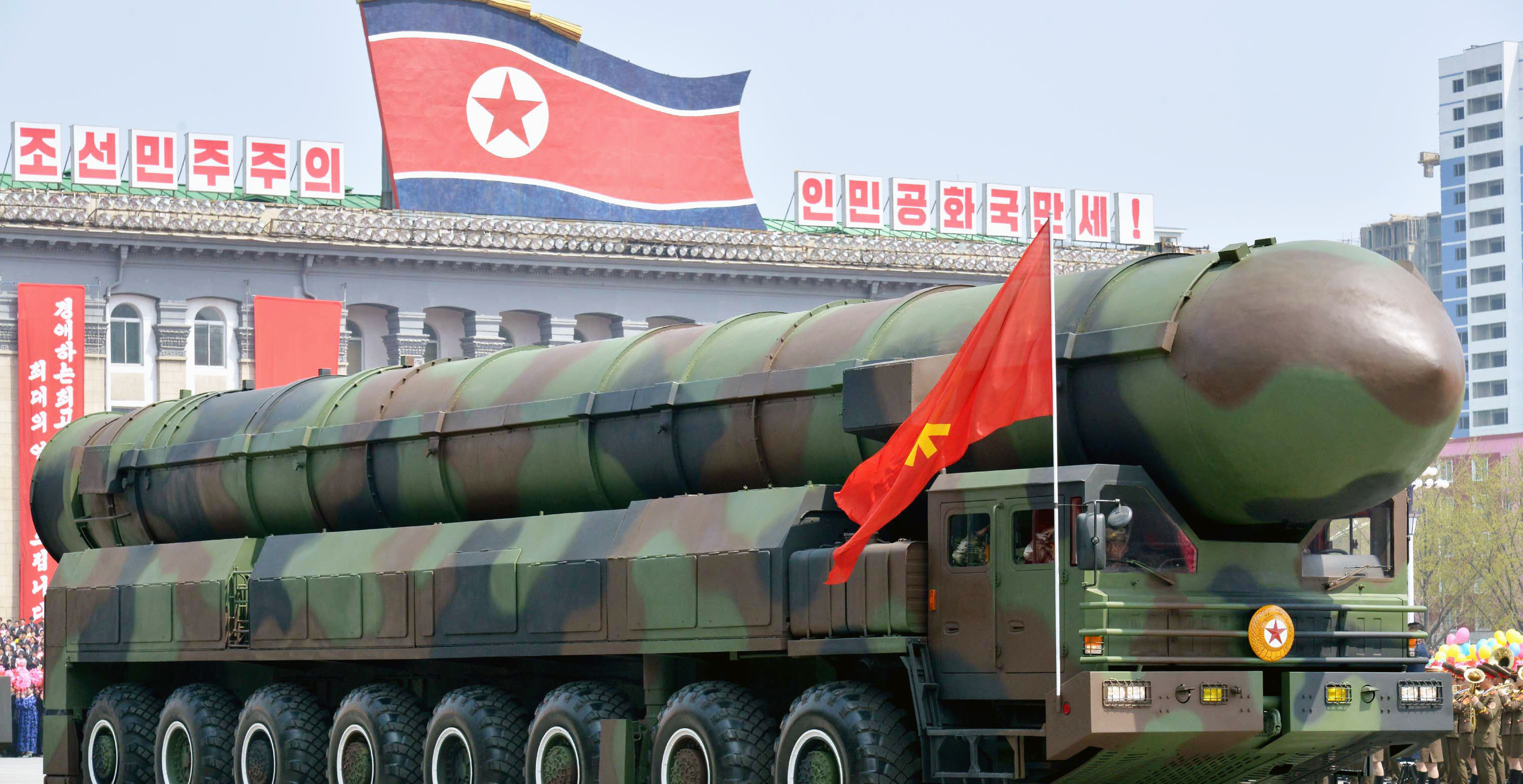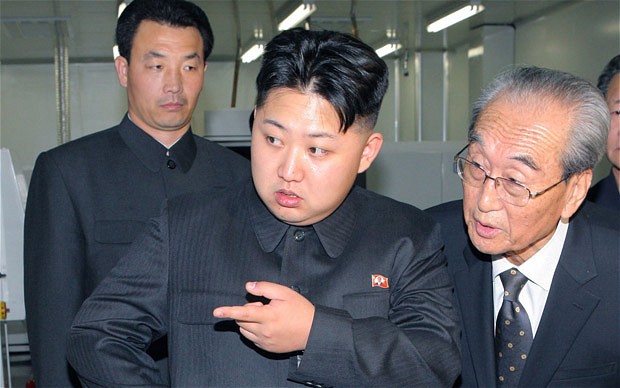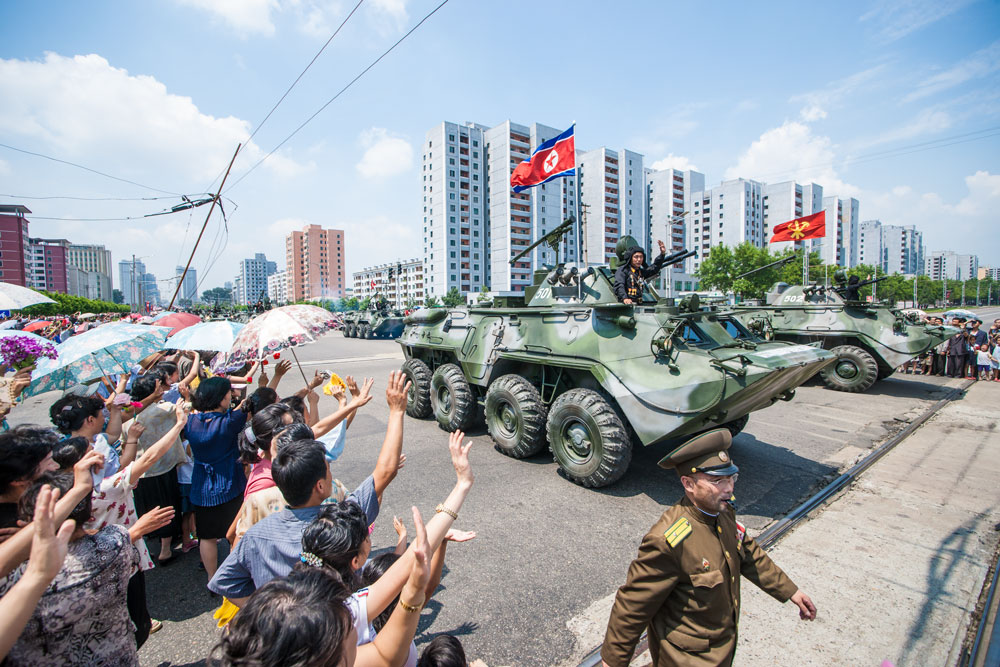
Business & Economics
We need one law for all

As North Korea tests another missile, U.S. President Donald Trump says Washington is willing to talk, but only under the right conditions
Published 22 May 2017
As tensions mount on the Korean peninsula, and North Korea’s strategic capabilities grow, a nuclear war stretching beyond Northeast Asia is becoming a real prospect.
But with President Trump’s announcement that he is willing to ‘engage’, there still exists scope to freeze Pyongyang’s programmes, as a first step toward peace in Korea. This will only happen through dialogue and government’s need to take advantage of this, narrowing, window of opportunity before it’s too late.

North Korea has conducted five nuclear tests and Pyongyang is credited with having the ability to develop first generation nuclear weapons, which have a nominal yield of 20 kilotonnes of TNT. From this foundation North Korea can go on to develop more powerful city-busting weapons.
Recent evidence has emerged of extensive North Korean tunnelling activity at its nuclear test site at Punggye-ri. The new upgraded tunnels can contain nuclear explosions of up to 282 kilotonnes, which is what you would expect to see if North Korea were interested in developing weapons with much higher yields than first generation weapons.
North Korea’s nuclear weapons are also becoming more powerful, but critically, they’re becoming more compact. Nuclear weapons scientists seek to engineer weapons with high yield to weight ratios for delivery by ballistic missile, and it seems North Korea is making worrying progress here too.
Meanwhile, the Yongbyon Nuclear Scientific Research Center, where North Korea produces nuclear materials for its weapons, continues to manufacture plutonium and highly enriched uranium. This means North Korea’s stockpile of nuclear materials for weapons is also growing.

Business & Economics
We need one law for all
But North Korea still relies on a fleet of ballistic missiles to deliver nuclear weapons to their intended targets. One reason Pyongyang wants more powerful bombs is because its missiles are inaccurate. For a long time North Korea’s ballistic missile programme was based on reverse engineering Soviet-derived Scud technology; but this has inherent physical limitations which limited North Korea’s reach, and so lowered the world’s perception of threat.
But North Korea now is well and truly advancing beyond Scud-derived technology. One example of this is the development of medium range, solid fuelled missiles developed, in part, from the Soviet R-27 sea-launched ballistic missile. More significantly, North Korea has developed a powerful indigenously designed, liquid propelled engine which it used to test the Hwasong-12 intermediate range missile on 14 May this year. The Hwasong-12, with a range of 4800km, is essentially a modified KN-08 missile with the third stage removed and the remaining two stages shortened.
Medium range and intermediate range missiles can form the basis of a subsequent programme to manufacture intercontinental ballistic missiles (ICBM). Indeed the KN-08 is widely believed to form the basis of Pyongyang’s liquid-fuelled ICBM programme.
The Hwasong-12 launch was likely a testbed for the KN-08. At the recent blockbuster military parade marking the birthday of Kim Il-sung, the founder of North Korea, the nation showed off two new types of ICBM and Kim Jong-un has stated that North Korea will test an ICBM later this year.
North Korea’s nuclear warheads appear to have advanced, but they still don’t have the ability to launch long-range attacks. They still need a re-entry vehicle, which protects the warhead on top of a missile, that can survive the vibrations and accelerations of launch, as well as the high levels of G-force and the increased temperatures of re-entry from space.

The two new types of ICBM paraded in April’s celebrations weren’t really missiles. They were canisters for ICBMs on top of transporter erector launchers. What was inside the canisters, if anything, remains unknown.
Also worth considering is that Pyongyang may have been bluffing, as Khrushchev did during the Cold War. ICBMs require extensive, time-consuming flight testing before they are considered reliable weapons, and Pyongyang hasn’t yet begun an all-components ICBM test programme.
So while North Korea’s capabilities are growing they still haven’t developed a credible comprehensive strategic nuclear deterrent that is able to strike targets in South Korea, Japan, US military bases in the Pacific or the continental United States. They are still years away from this, which leaves open the possibility of pursuing diplomacy to freeze North Korea’s capabilities before they grow further.

Business & Economics
Why South Korea’s fresh start is good news for Australian business
At the moment, the international community has limited military options to respond to North Korea’s growing capabilities. A comprehensive series of air strikes against North Korea’s nuclear and missile assets would have a very large footprint, so Pyongyang could easily misconstrue them as the opening shots of a much wider air campaign. Additionally, they would not eliminate all North Korea’s capabilities.
This also sits within the context of North Korea’s significant artillery firepower on its border - well within striking range of the South Korean capital. Pyonyang could be tempted to deploy them immediately if bombs start to fall, lest they lose them, wiping out Seoul and starting a new Korean war.
North Korea could also strike South Korea, and parts of Japan, with nuclear tipped Nodong and extended-range Scud missiles, and ballistic missile defence does not offer a guaranteed means of defence against North Korea’s growing missile programme.
Also worth considering is that if there were an outbreak of war on the Korean peninsula, it may not remain limited to North Korea. China may feel the compulsion to intervene to prevent a reunified Korea hosting US ground forces within striking distance of the Chinese border.
Although a lot of international focus has been directed China’s way, it’s easy to forget that North Korea shares a border with Russia. It is hard to see how strategic planners in Moscow would allow the US to open a second front in the East along its border without some pushback.
The most rational course of action, assuming nuclear non-proliferation is the top policy priority, would be the initiation of high-level bilateral diplomacy between Washington and Pyongyang with a view to freezing North Korea’s capabilities. Such an agreement could serve as a security and confidence-building measure opening further diplomatic initiatives directed toward denuclearisation of the Korean peninsula.

The view that North Korea would not be open to such talks should not be accepted a priori. North Korea largely abided by the Agreed Framework with the Clinton administration, and observed a missile testing moratorium from 1999 to 2006. It was the Bush administration that scuttled a denuclearisation accord in 2006, not Pyongyang, and the current phase of the nuclear and missile crisis in Korea began in 2006.
North Korea has pursued a rational strategy of tit-for-tat in its dealings with Washington. The policy of strategic patience, pursued by Obama and, despite the rhetoric, currently by Donald Trump, can continue indefinitely only with an added corollary of a position of mutual nuclear deterrence.
The combination of continued external international pressure on Pyongyang and mutual nuclear deterrence would not be a happy one. For instance, the massive annual Foal Eagle military exercises between South Korea and the United States, which has seen the US deploy nuclear capable bombers, and North Korean responses to them, could spiral out of control leading to nuclear conflict. In 1983 NATO’s Able Archer exercises came very close to a real nuclear war between NATO and the Warsaw Pact.
Pyongyang might even seek to cultivate this possibility to bolster the credibility of deterrence. This is what nuclear strategists call “the threat that leaves something to chance.”
Reason surely dictates that this is a chance we should not, and need not, take.
Banner image: A vehicle carrying what appears to be a new intercontinental ballistic missile at a military parade at Kim Il Sung Square in Pyongyang/ Getty